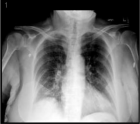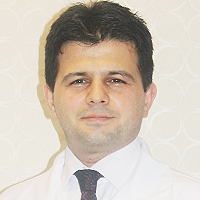Abstract
Brief Communication
Problems shared in psychiatry helpline of a teaching hospital in eastern Nepal during COVID-19 pandemic lockdown
Dhana Ratna Shakya*
Published: 27 April, 2020 | Volume 4 - Issue 1 | Pages: 037-039
COVID-19 pandemic soon apparently proved to be havoc and a great stressor. During such a stressful time, mental health is in threat. Here, we intend to review the presenting problems/ symptoms as shared in psychiatry helpline of a Teaching Hospital in eastern Nepal during the second week of lockdown and to reflect on to emotional, including mood problems.
It is an institute based period observation noted for all psychiatry helpline calls during 1 week of lockdown days of COVID-19. Their concerns and problems were listened and symptoms clarified by a consultant psychiatrist to help them as far as possible through the telephonic conversation. Maintaining the confidentiality, basic information were noted down in a semi-structured proforma to record certain socio-demographic and clinical information (including mood and other emotional symptoms).
We received 102 helpline calls of 60 clients for psychiatry in 1 week, from 14 districts. More patients being discussed were males (35/60), average age being 34.15 (15 - 70) years. More patients were regular follow-up cases with some new issues (24/60) and 18/60 each were new clients and regular follow-up cases. Majority had exacerbated symptoms in the wake of COVID-19 as: emotional (47/60; mood 24/60, anxiety/worry 23/60) symptoms along with disturbed sleep (32/60); treatment/service issues (31/60) and changed routines. Most common mental problems were Bipolar affective disorder, Psychosis, Anxiety and Depression and advices included Antipsychotics, Benzodiazepines, Antidepressants, along with some Psycho-education. Most common concerns were about OPD service, worsening symptoms and local unavailability of medicines. Many had mood and emotional symptoms in this stressful time, both simple amenable to telephonic advices and severe requiring to be called to emergency service.
Read Full Article HTML DOI: 10.29328/journal.ida.1001017 Cite this Article Read Full Article PDF
Keywords:
COVID-19; Emotional; Psychiatry helpline; Mental illness; Mood; Psychosocial problems; Nepal; Symptoms
References
- Liang T. Digital Support for Epidemic Prevention and Control. In: Handbook of COVID-19 Prevention and Treatment. 2020.
- McIntosh K. Coronavirus disease 2019 (COVID-19). Hirsch MS, Bloom A (Eds.). 2019.
- Knoll JL. Panic and Pandemics: The Return of the Absurd. Psychiatric Times. 2020.
- Ministry of health and population, Nepal. Coronavirus disease (COVID-19) outbreak: Updates and Resource materials.
- Country and Technical guidance- Coronavirus disease (COVID-19). 2019.
- Koirala BP. Institute of Health Sciences. Annual Report (2018-19) and Plan of Actions (2019-20).
- Shakya DR, Lamichhane N, Shyangwa PM, Shakya R. Nepalese psychiatric patients with armed-conflict related stressors. Health Renaissance. 2011; 9: 67-72.
- Shakya DR. Psychiatric emergencies in Nepal. Developing Mental Health. 2015; 2: 6-8.
- Shakya DR. The Nepal earthquake- use of a disaster to improve mental health literacy. Br J Psych Int. 2015; 13: 8-9. Pubmed: https://www.ncbi.nlm.nih.gov/pubmed/29093882
Similar Articles
-
Burnout and Related Factors in Caregivers of outpatients with SchizophreniaHatice Demirbas*,Erguvan Tugba Ozel Kizil. Burnout and Related Factors in Caregivers of outpatients with Schizophrenia. . 2017 doi: 10.29328/journal.hda.1001001; 1: 001-011
-
Anxiety and depression as an effect of birth order or being an only child: Results of an internet survey in Poland and GermanyJochen Hardt*,Lisa Weyer,Malgorzata Dragan,Wilfried Laubach. Anxiety and depression as an effect of birth order or being an only child: Results of an internet survey in Poland and Germany. . 2017 doi: 10.29328/journal.hda.1001003; 1: 015-022
-
Mindset kinetics and some depression status: A new quantitative model under biochemical - toxicology approach?Luisetto M*,Ghulam Rasool Mashori,Behzad Nili-Ahmadabadi,Farhan Ahmad Khan,Kausar Rehman Khan. Mindset kinetics and some depression status: A new quantitative model under biochemical - toxicology approach?. . 2018 doi: 10.29328/journal.ida.1001008; 2: 029-039
-
Problems shared in psychiatry helpline of a teaching hospital in eastern Nepal during COVID-19 pandemic lockdownDhana Ratna Shakya*. Problems shared in psychiatry helpline of a teaching hospital in eastern Nepal during COVID-19 pandemic lockdown. . 2020 doi: 10.29328/journal.ida.1001017; 4: 037-039
-
Psychological studies of stress experienced by seamen during a long-distance sea voyage#Mieczysław Plopa*. Psychological studies of stress experienced by seamen during a long-distance sea voyage#. . 2020 doi: 10.29328/journal.ida.1001019; 4: 049-054
-
Prevalence and measurement of anxiety and depression in nurses during COVID pandemic in NepalAyush Chandra*,Avinash Chandra,Nabina Sharma. Prevalence and measurement of anxiety and depression in nurses during COVID pandemic in Nepal. . 2020 doi: 10.29328/journal.ida.1001021; 4: 059-063
-
Burden and depressive symptoms in health care residents at COVID-19: A preliminary reportDaniela Betinassi Parro-Pires*,Sérgio Henrique de C Matias Barros,Fernanda Sabina HD Araújo,Daniel Zandoná Santos,Luiz Antônio Nogueira-Martins,Vanessa de Albuquerque Citero. Burden and depressive symptoms in health care residents at COVID-19: A preliminary report. . 2021 doi: 10.29328/journal.ida.1001024; 5: 005-008
-
Impact of amitriptyline on learning and memoryMfem CC,Seriki SA*. Impact of amitriptyline on learning and memory. . 2021 doi: 10.29328/journal.ida.1001025; 5: 009-015
-
Depression and anxiety in patients with suspected renal artery stenosisLudvig Hallberg*,Anders Gottsater,Anders Isaksson,Asa Westrin. Depression and anxiety in patients with suspected renal artery stenosis. . 2021 doi: 10.29328/journal.ida.1001026; 5: 009-015
-
Observation of telepsychiatry service in a teaching hospital of eastern Nepal during COVID-19 pandemicDhana Ratna Shakya*. Observation of telepsychiatry service in a teaching hospital of eastern Nepal during COVID-19 pandemic. . 2021 doi: 10.29328/journal.ida.1001027; 5: 025-028
Recently Viewed
-
Sinonasal Myxoma Extending into the Orbit in a 4-Year Old: A Case PresentationJulian A Purrinos*, Ramzi Younis. Sinonasal Myxoma Extending into the Orbit in a 4-Year Old: A Case Presentation. Arch Case Rep. 2024: doi: 10.29328/journal.acr.1001099; 8: 075-077
-
Timing of cardiac surgery and other intervention among children with congenital heart disease: A review articleChinawa JM*,Adiele KD,Ujunwa FA,Onukwuli VO,Arodiwe I,Chinawa AT,Obidike EO,Chukwu BF. Timing of cardiac surgery and other intervention among children with congenital heart disease: A review article. J Cardiol Cardiovasc Med. 2019: doi: 10.29328/journal.jccm.1001047; 4: 094-099
-
Advancing Forensic Approaches to Human Trafficking: The Role of Dental IdentificationAiswarya GR*. Advancing Forensic Approaches to Human Trafficking: The Role of Dental Identification. J Forensic Sci Res. 2025: doi: 10.29328/journal.jfsr.1001076; 9: 025-028
-
Scientific Analysis of Eucharistic Miracles: Importance of a Standardization in EvaluationKelly Kearse*,Frank Ligaj. Scientific Analysis of Eucharistic Miracles: Importance of a Standardization in Evaluation. J Forensic Sci Res. 2024: doi: 10.29328/journal.jfsr.1001068; 8: 078-088
-
Toxicity and Phytochemical Analysis of Five Medicinal PlantsJohnson-Ajinwo Okiemute Rosa*, Nyodee, Dummene Godwin. Toxicity and Phytochemical Analysis of Five Medicinal Plants. Arch Pharm Pharma Sci. 2024: doi: 10.29328/journal.apps.1001054; 8: 029-040
Most Viewed
-
Evaluation of Biostimulants Based on Recovered Protein Hydrolysates from Animal By-products as Plant Growth EnhancersH Pérez-Aguilar*, M Lacruz-Asaro, F Arán-Ais. Evaluation of Biostimulants Based on Recovered Protein Hydrolysates from Animal By-products as Plant Growth Enhancers. J Plant Sci Phytopathol. 2023 doi: 10.29328/journal.jpsp.1001104; 7: 042-047
-
Sinonasal Myxoma Extending into the Orbit in a 4-Year Old: A Case PresentationJulian A Purrinos*, Ramzi Younis. Sinonasal Myxoma Extending into the Orbit in a 4-Year Old: A Case Presentation. Arch Case Rep. 2024 doi: 10.29328/journal.acr.1001099; 8: 075-077
-
Feasibility study of magnetic sensing for detecting single-neuron action potentialsDenis Tonini,Kai Wu,Renata Saha,Jian-Ping Wang*. Feasibility study of magnetic sensing for detecting single-neuron action potentials. Ann Biomed Sci Eng. 2022 doi: 10.29328/journal.abse.1001018; 6: 019-029
-
Pediatric Dysgerminoma: Unveiling a Rare Ovarian TumorFaten Limaiem*, Khalil Saffar, Ahmed Halouani. Pediatric Dysgerminoma: Unveiling a Rare Ovarian Tumor. Arch Case Rep. 2024 doi: 10.29328/journal.acr.1001087; 8: 010-013
-
Physical activity can change the physiological and psychological circumstances during COVID-19 pandemic: A narrative reviewKhashayar Maroufi*. Physical activity can change the physiological and psychological circumstances during COVID-19 pandemic: A narrative review. J Sports Med Ther. 2021 doi: 10.29328/journal.jsmt.1001051; 6: 001-007

HSPI: We're glad you're here. Please click "create a new Query" if you are a new visitor to our website and need further information from us.
If you are already a member of our network and need to keep track of any developments regarding a question you have already submitted, click "take me to my Query."
















































































































































